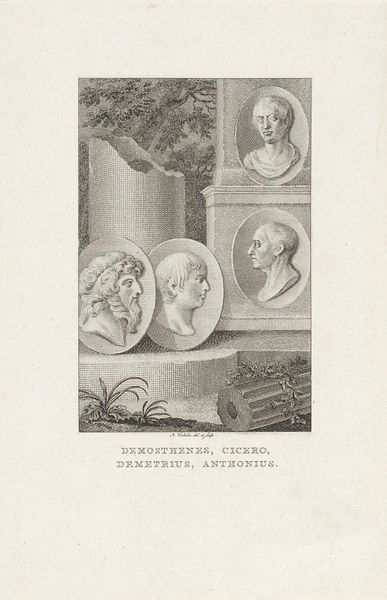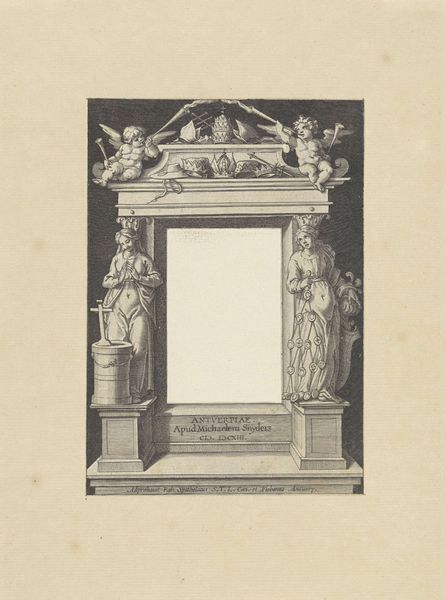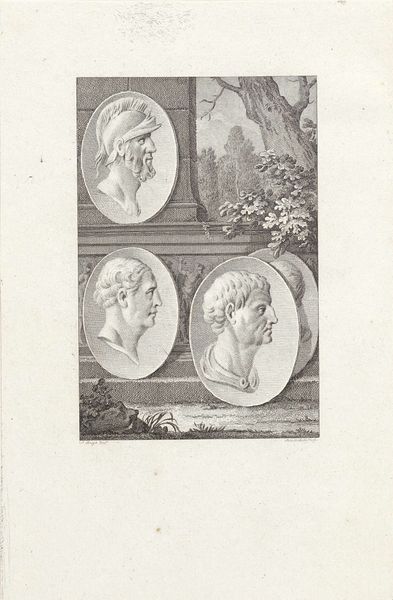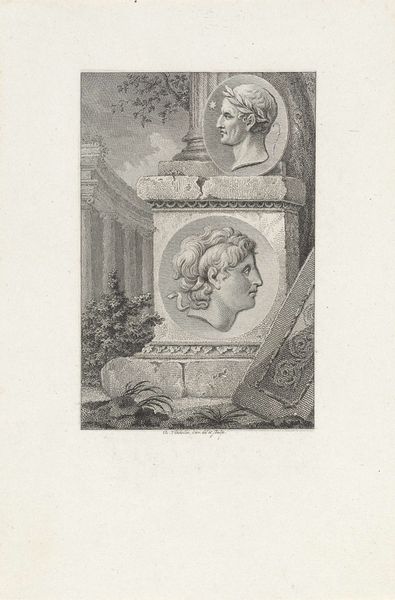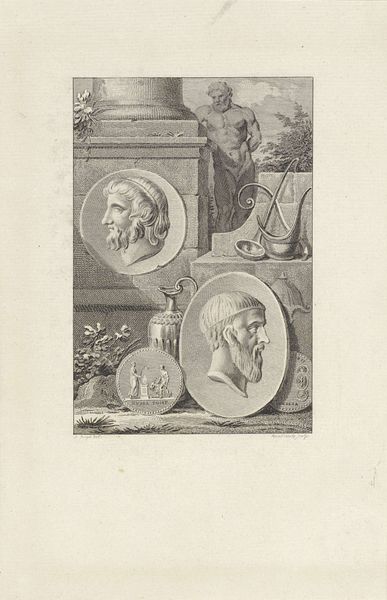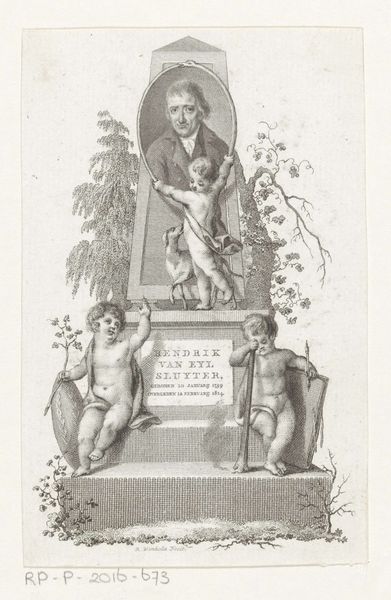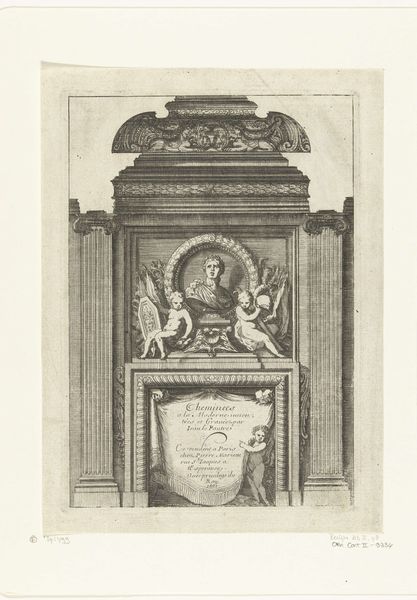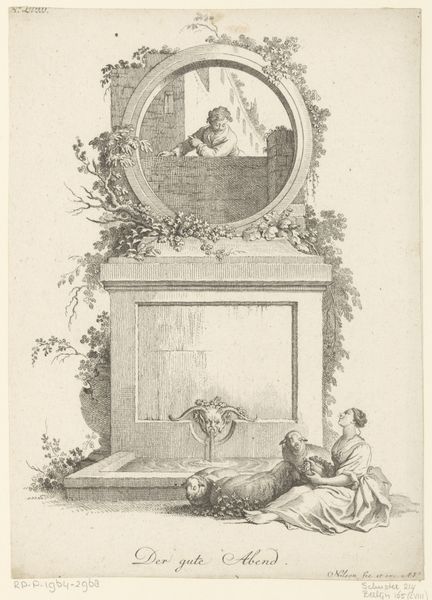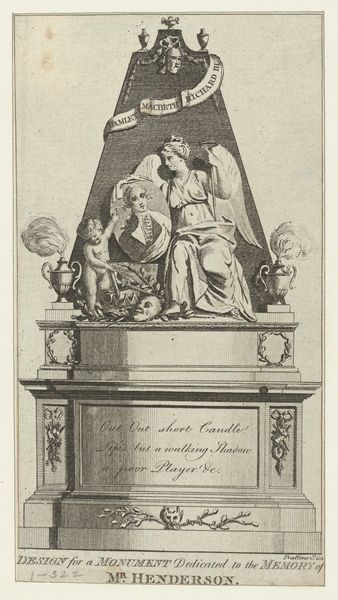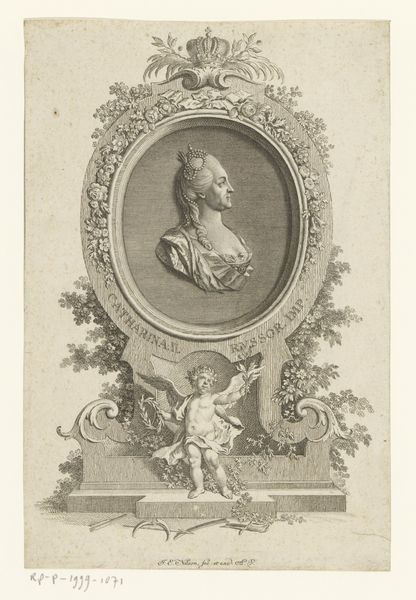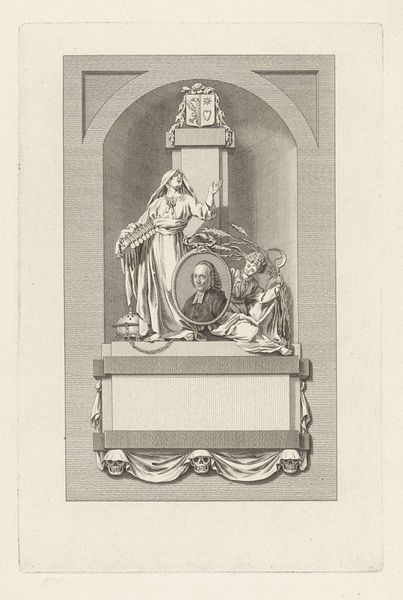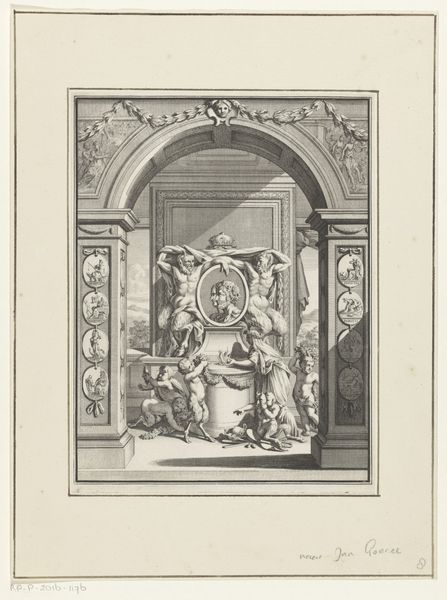
Medaillons met portretten van Phocion, Tiberius en Gaius Sempronius Gracchus 1789 - 1809
0:00
0:00
reiniervinkeles
Rijksmuseum
print, engraving
#
portrait
#
neoclacissism
# print
#
old engraving style
#
classical-realism
#
personal sketchbook
#
history-painting
#
academic-art
#
engraving
Dimensions: height 244 mm, width 151 mm
Copyright: Rijks Museum: Open Domain
Editor: This is Reinier Vinkeles' engraving, "Medaillons met portretten van Phocion, Tiberius en Gaius Sempronius Gracchus," dating from around 1789 to 1809. I’m struck by its classic, almost severe style and the way these historical figures are presented as these sort of stoic, timeless images. What do you see in this print? Curator: It's fascinating how Vinkeles engages with the past, isn't it? These aren’t just portraits; they’re carefully chosen figures. Phocion, the Greek statesman, alongside Tiberius and Gaius Gracchus, Roman reformers. Vinkeles isn’t simply reproducing images but invoking ideas about leadership, virtue, and the responsibilities of citizenship. The Neoclassical style, popular then, served a purpose. What do you think that purpose was? Editor: To connect with the virtues of those figures, the civic ideals of the Roman Republic maybe? But also, shouldn’t the Neoclassical style also be interpreted as having served as propaganda for wealthy patrons during the era? Curator: Precisely! This style presented these leaders as paragons of virtue, reflecting values the elites wished to be associated with. This connects with how museums and art institutions shape the reception of the art. Vinkeles subtly uses printmaking, normally thought of as “for the masses”, to further entrench these powerful concepts in the public sphere. The layering of historical reference, artistic style, and printing method provides an insight into the sociopolitical agenda of the piece. Do you find your understanding of the artwork shift as a result? Editor: It definitely does, thinking about how these images actively shaped public perceptions of those figures—and what that meant for society at the time, the art patrons, and their place in the culture. It is powerful to see art employed for such political ends. Curator: It underscores the political function of art. Even what appears classical and timeless is always rooted in a specific historical moment and is trying to convey meaning and solidify hierarchies. Editor: So it's not enough to admire the aesthetic skill of the engraving itself; it’s about understanding its role in a wider historical and social context. Curator: Exactly! Art always reflects and reinforces existing values, ideas, and the politics that created those values to begin with.
Comments
No comments
Be the first to comment and join the conversation on the ultimate creative platform.


